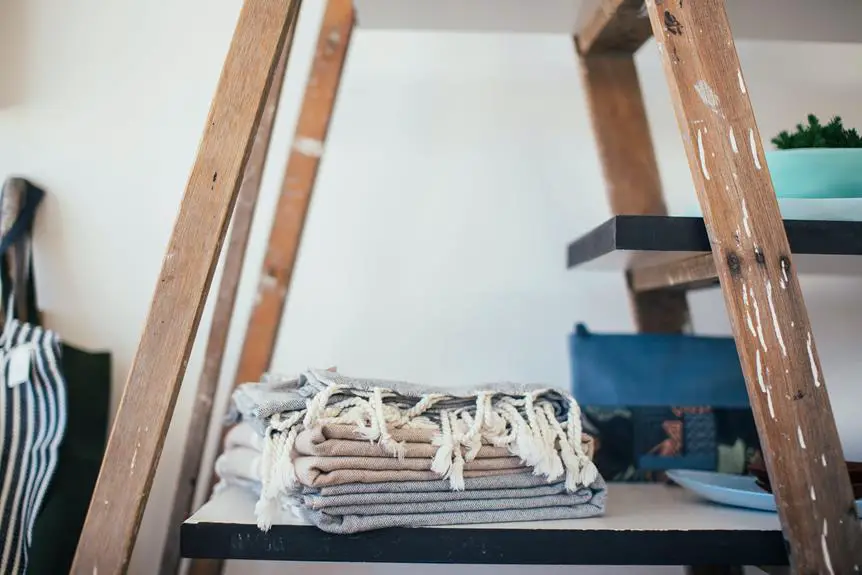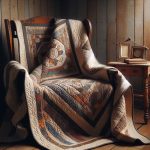You've mastered the art of quilting, but batting fabric can be a bit tricky, wouldn't you agree?
Understanding the essentials of batting fabric is crucial to achieving the perfect finish for your quilts. From different types of batting to the impact it has on the appearance of your quilt, there are key factors you need to consider.
Learning about the techniques for quilting with batting and how to care for it will elevate your quilting game to the next level.
In this guide, we'll explore the five essential things you need to know about batting fabric, providing you with the knowledge to take your quilting projects to new heights.
Key Takeaways
- Polyester batting is durable, non-allergenic, and retains shape after washing.
- Cotton batting is a natural option that is breathable and provides a traditional quilted look.
- Bamboo batting is sustainable and eco-friendly, breathable, moisture-wicking, and anti-bacterial.
- Wool batting offers excellent warmth, natural springiness, lightweight, and superb stitch definition.
Types of Batting Fabric
When selecting batting fabric for your project, consider the various types available to ensure the best results.
Two common types of batting fabric are polyester and cotton. Polyester batting is a great choice for its durability, non-allergenic properties, and ability to retain its shape even after washing. It's ideal for quilts and other projects that require frequent washing.
On the other hand, cotton batting is a natural option that provides breathability and a traditional quilted look. It's soft, easy to needle, and works well for both hand and machine quilting.
Another pair of options to consider are bamboo and wool batting. Bamboo batting is known for its sustainable and eco-friendly nature. It's breathable, moisture-wicking, and has anti-bacterial properties, making it an excellent choice for bed quilts.
Wool batting, on the other hand, offers excellent warmth, making it suitable for colder climates. It has natural springiness, is lightweight, and provides superb stitch definition.
Understanding the differences between these types of batting fabric will help you select the most suitable option for your specific project, ensuring the best results.
Considerations for Choosing Batting
To choose the right batting fabric for your project, consider the specific qualities and characteristics that will best suit your needs and desired outcome. When considering batting for your project, there are a few important factors to keep in mind:
- Batting Thickness: The thickness of batting can greatly affect the look and feel of your finished project. Thicker batting can provide more loft and warmth, making it ideal for quilts and winter projects, while thinner batting may be more suitable for wall hangings or projects where a flatter appearance is desired.
- Material Composition: The material composition of the batting can impact its drape, durability, and ease of quilting. Natural fibers like cotton and wool offer breathability and a traditional look, while synthetic fibers like polyester can provide loft and resilience. Blends of natural and synthetic fibers can offer a balance of characteristics.
- Project Requirements: Consider the specific needs of your project. For example, if you're creating a quilt that will be frequently washed, a durable and shrink-resistant batting may be preferable.
Considering these factors will help you choose the batting fabric that best suits your project and ensures a successful outcome.
Impact of Batting on Quilt Appearance
Considering the impact of batting on quilt appearance is crucial for achieving the desired visual and tactile qualities in your project. The choice of batting significantly influences the texture and thickness of your quilt. Here's a comparison of how different types of batting can affect the appearance of your quilt:
| Batting Type | Quilt Texture | Fabric Thickness |
|---|---|---|
| Polyester | Smooth and slightly puffy | Thin to medium thickness |
| Cotton | Textured and drapey | Thin to medium thickness |
| Wool | Plush and lofty | Medium to thick thickness |
The quilt texture is determined by how the fibers in the batting blend together when quilted, creating a smooth, textured, or plush surface. Additionally, fabric thickness varies based on the type of batting, influencing the overall weight and feel of the quilt. Understanding the impact of batting on quilt appearance allows you to make informed choices that align with your aesthetic and functional preferences. By selecting the right batting, you can enhance the visual and tactile appeal of your quilts, ensuring they meet your expectations for both appearance and feel.
Techniques for Quilting With Batting
You can achieve optimal results when quilting with batting by mastering various techniques that ensure proper handling and stitching for a flawless finish. Here are some essential techniques to consider:
- Choosing the Right Batting Thickness: Selecting the appropriate batting thickness is crucial for achieving the desired look and feel of your quilt. Thicker battings provide more dimension and warmth, while thinner battings are ideal for lightweight and more intricate quilting patterns. Understanding the impact of batting thickness on the overall appearance and functionality of your quilt will help you make informed decisions.
- Adapting Quilting Patterns: Different batting types lend themselves to specific quilting patterns. For example, high-loft battings are suitable for trapunto or other raised quilting techniques, while low-loft battings may be better suited for densely quilted designs. Adapting your quilting patterns to complement the characteristics of the chosen batting ensures that the quilt retains its intended look and texture.
- Handling and Stitching Techniques: Proper handling and stitching techniques are essential for working with batting. Ensuring smooth and even fabric layers, appropriate basting, and selecting the right needle and thread for the batting type are crucial for achieving professional-looking results.
Care and Maintenance of Batting
Maintaining the integrity of your batting involves regularly inspecting for any signs of wear or damage.
When it comes to washing instructions, always refer to the manufacturer's recommendations, as different types of batting may require specific care. In general, it's best to use a gentle cycle with mild detergent and avoid harsh chemicals or bleach.
After washing, ensure thorough rinsing and gentle squeezing to remove excess water, followed by air drying or using a low-heat setting in the dryer.
When storing batting, keep it in a dry, cool, and well-ventilated area, away from direct sunlight and moisture. Avoid folding it for extended periods to prevent creases or permanent wrinkles. Instead, roll the batting and store it in a breathable fabric or acid-free paper to maintain its loft and shape.
Frequently Asked Questions
Can Batting Fabric Be Used for Anything Other Than Quilting?
Yes, batting fabric can be used for more than just quilting. It's great for upholstery projects and craft projects too. Its versatility and padding make it a useful material for various creative endeavors.
How Can I Tell if a Batting Fabric Is Pre-Shrunk or Not?
To tell if a batting fabric is pre-shrunk, check the label or manufacturer's instructions. Pre-shrunk batting has washing instructions and a shrinkage percentage listed. It's beneficial as it won't shrink after washing, unlike non-pre-shrunk batting.
Are There Any Special Considerations for Using Batting Fabric in High-Humidity Environments?
In high-humidity environments, consider batting fabric with good moisture management and mold resistance. Look for breathable options to prevent heat retention. These features help maintain the integrity of your quilt in such conditions.
What Are the Best Methods for Storing Batting Fabric to Keep It in Good Condition?
To keep your batting fabric in good condition, store it in a cool, dry place away from direct sunlight and moisture. Consider using a cotton storage bag or acid-free tissue paper to preserve the fabric's quality.
Can Batting Fabric Be Dyed or Colored to Match Specific Quilt Projects?
Yes, you can dye or color batting fabric to match specific quilt projects. Fabric dyeing offers a way to customize the fabric, allowing for creative projects and alternative uses beyond its original color.
- Tetron Fabric for Marine Applications: Durability and Use Cases - June 18, 2025
- Tetron Fabric for Outdoor Furniture: Weather Resistance and Care - June 18, 2025
- Tetron Fabric for Wall Coverings: Style and Application Tips - June 18, 2025




